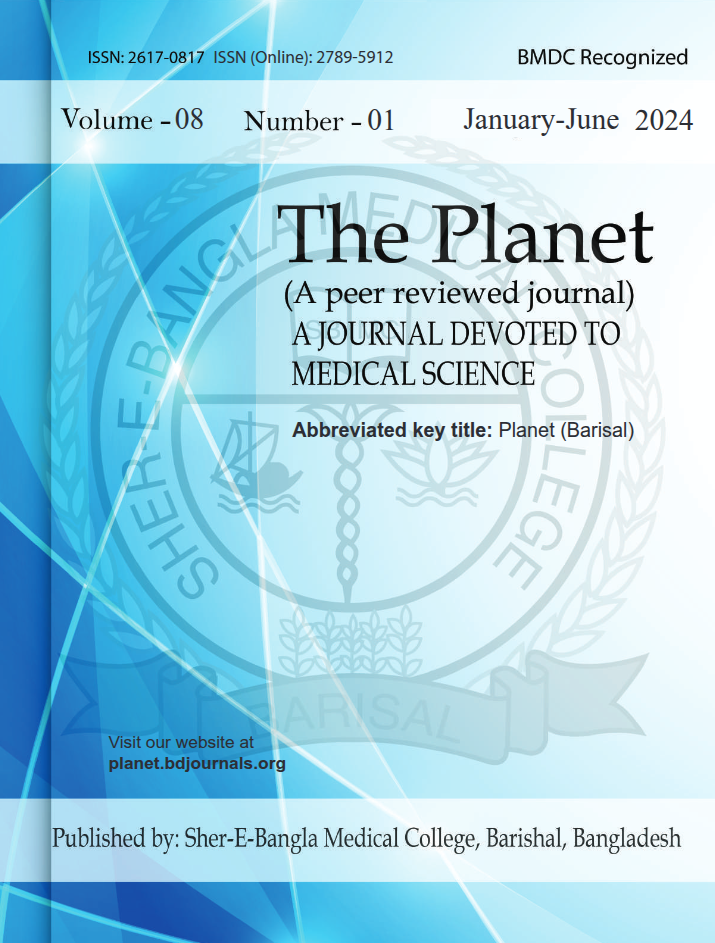Morphological Classification and Facet-Based Typing of Human Left Patella - A Descriptive Skeletal Study in a Bangladeshi Population
Publiée 2024-03-17
Mots-clés
- Patella morphometry,
- Facet classification,
- Sexual dimorphism,
- Bangladeshi population,
- Orthopedic anatomy
(c) Copyright The Planet 2024

Ce travail est disponible sous la licence Creative Commons Attribution 4.0 International .
Comment citer
Résumé
Background: The patella is the largest sesamoid bone, crucial for knee joint biomechanics, yet little is known about its morphometry and facet-based classification in the Bangladeshi population. The current study aimed to evaluate sex-based morphometric differences and facet classification of the human left patella in a Bangladeshi skeletal sample. Methods & Materials: A total of 150 dry, fully ossified left patellae were analyzed. Linear dimensions (height, width, thickness, and facet widths) and derived ratios (width-to-height, width-to-thickness, height-to-thickness, facet ratios) were recorded. Sex was estimated using discriminant function analysis. Patellae were classified into Types A, B, and C based on articular facet widths. Statistical comparisons were performed using unpaired t-tests (p<0.05). Results: All measured dimensions were significantly higher in males (p<0.001) except the width-to-height ratio and median ridge position (p>0.05). Type B patellae (WMAF < WLAF) were predominant (87.3%), while Type C was absent. The lateral facet ratio was significantly higher in females (p<0.001). Conclusion: This study confirms significant sexual dimorphism and the dominance of Type B patellae in the Bangladeshi population. These findings provide valuable anatomical references for orthopedics, prosthetic design, and forensic sex estimation.



